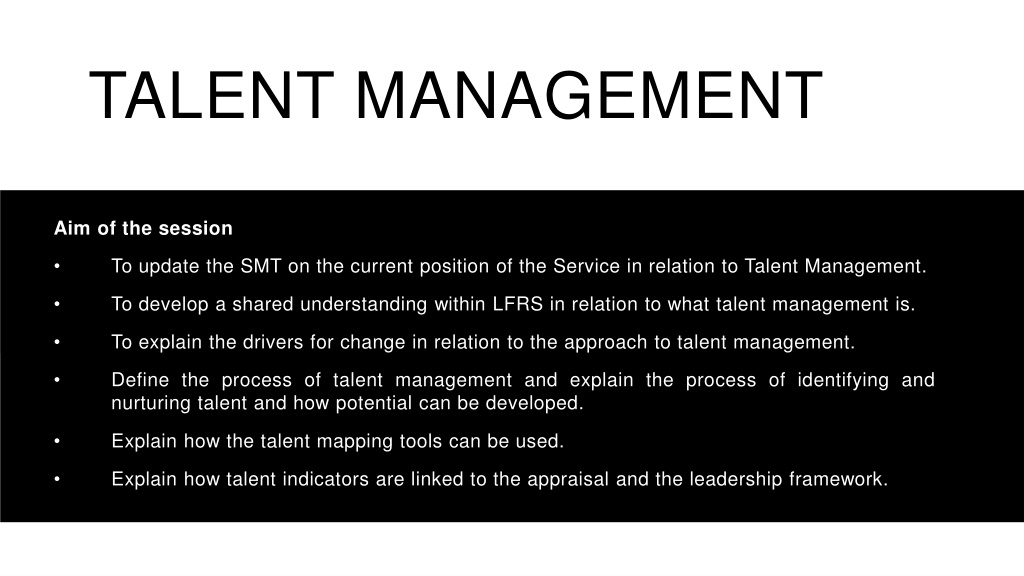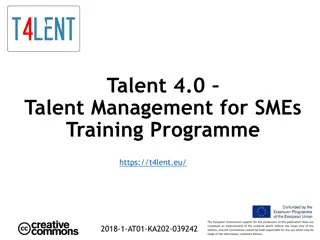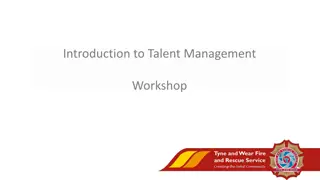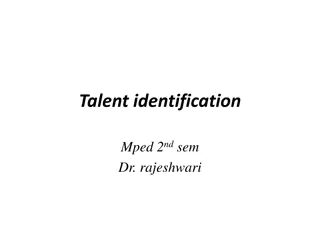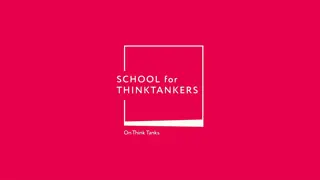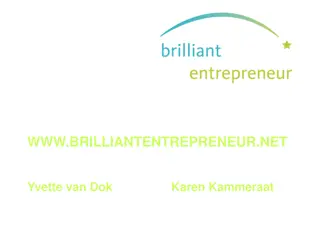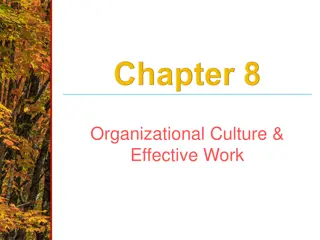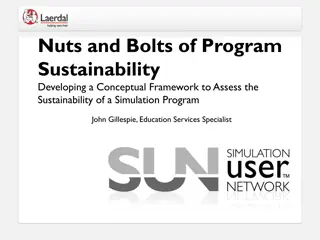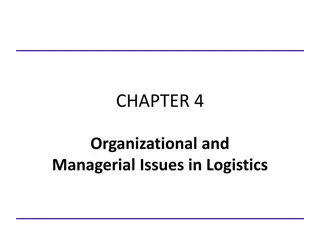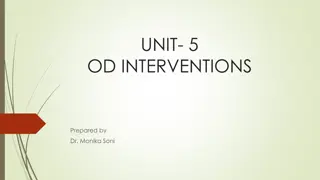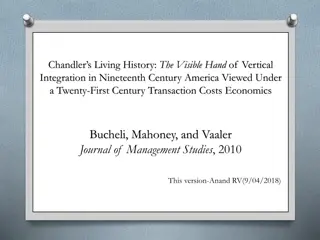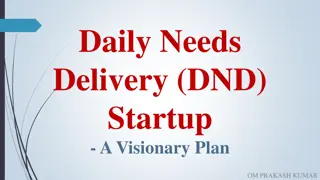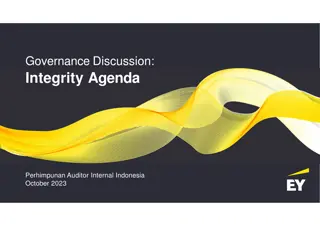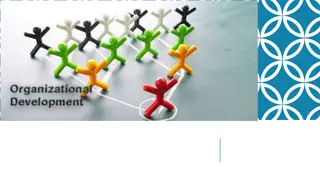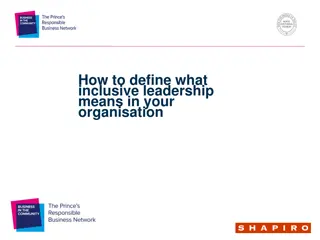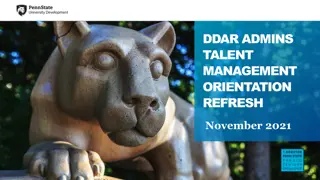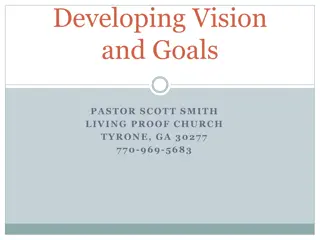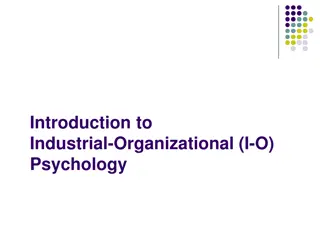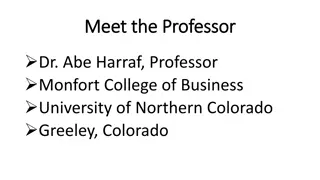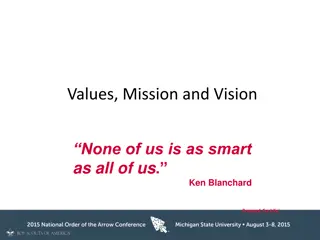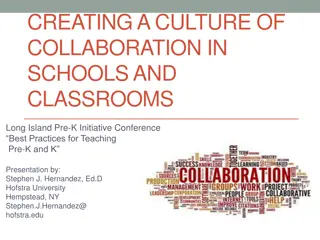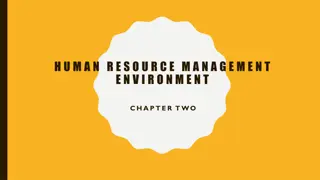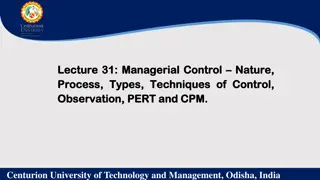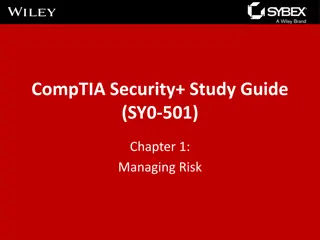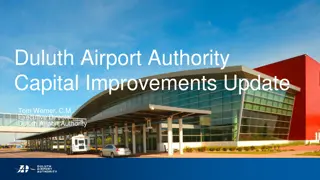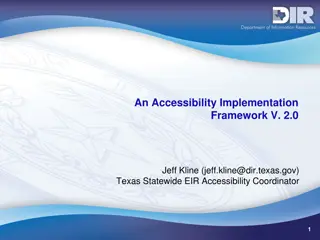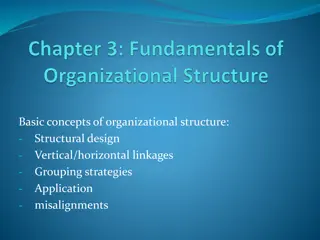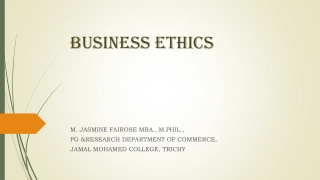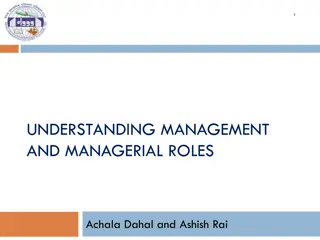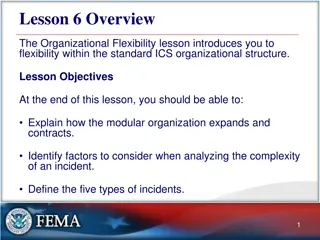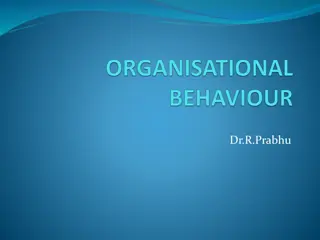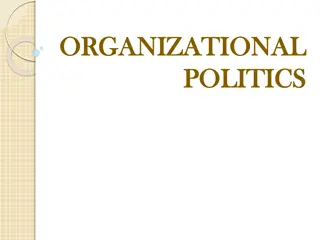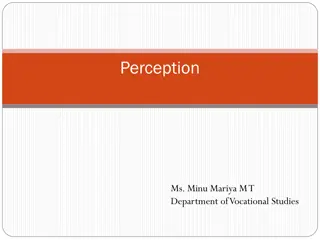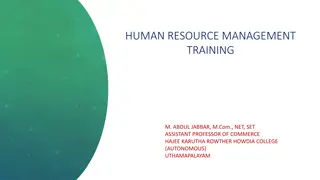Talent Management: Strategies and Best Practices for Organizational Success
Explore the essential components of talent management, including defining talent, attracting and recruiting, nurturing, retaining, and supporting talent within an organization. Learn about the drivers for change, talent mapping tools, and the importance of identifying and developing potential. Understand how talent indicators are linked to appraisal and leadership frameworks to ensure a successful talent management strategy.
Download Presentation

Please find below an Image/Link to download the presentation.
The content on the website is provided AS IS for your information and personal use only. It may not be sold, licensed, or shared on other websites without obtaining consent from the author. Download presentation by click this link. If you encounter any issues during the download, it is possible that the publisher has removed the file from their server.
E N D
Presentation Transcript
TALENT MANAGEMENT Aim of the session To update the SMT on the current position of the Service in relation to Talent Management. To develop a shared understanding within LFRS in relation to what talent management is. To explain the drivers for change in relation to the approach to talent management. Define the process of talent management and explain the process of identifying and nurturing talent and how potential can be developed. Explain how the talent mapping tools can be used. Explain how talent indicators are linked to the appraisal and the leadership framework.
TALENT MANAGEMENT Talent Management aims to consider the individual in relation to the Service using two factors: One which takes into account performance to date One which assesses performance
TALENT MANAGEMENT Drivers for change: Potentially 2021-2023: 0.7% Senior Manager Grey Book staff, 0.6% Middle Manager Grey Book staff, 11% Supervisory Grey Book Staff may retire. 18% of our workforce is aged over 50 years of age. 3.5% of our workforce is BME 17.5% of our workforce is female
TALENT MANAGEMENT Drivers for change: Inspection 3.4.2 To what extent are the career pathways of staff effectively managed. 3.4.3 How fairly does the FRS identify high potential members of the workforce become senior leaders The Service does not have a system in place to identify or fast- track members of staff who have high potential
TALENT MANAGEMENT Talent management is about ensuring LFRS: Has behaviours to deliver current and future organisational success. people with the right capabilities, commitment and Provides access to opportunities and stretch development that enable people to achieve their potential. Is able to identify and apply a consistent measure of individuals potential which is open and transparent.
ELEMENTS OF TALENT MANAGEMENT Defining it Area of focus Attracting and recruiting it Nurturing it Area of Focus Retaining it Support v Operational
DEFINING TALENT Defining talent considers: Performance to date: Capability, Behaviour, Commitment Potential. Recognises that leadership characteristics can be displayed across all levels of the Service.
IDENTIFYING EXISTING TALENT Talent can be identified by: The lifetime/career conversation within the appraisal by the line manager or the employee Talent Spotting
IDENTIFYING EXISTING TALENT The lifetime/career conversation within the appraisal: This can be raised by the line manager or the employee - an opportunity to discuss aspirations, life goals and suitable development. Indicators of talent performance (Capability, commitment, behaviour) readiness, capacity, ambition, motivation, raw potential.
IDENTIFYING EXISTING TALENT Talent Spotting The way individuals: Organise themselves. Deliver projects. Stand out positively. Are viewed by peers. Exert influence, Build relationships, maintain high performance themselves and within their team.
NURTURING TALENT/DEVELOPING POTENTIAL Once talent identified it can be nurtured by: Coaching Mentoring Working on a project Being a lead reference Working in a different Department Working a different shift system Undertaking development/training formal informal
TALENT IN LEADERSHIP ROLES Leadership Framework Effective leadership is about developing a vision for the future, as well as understanding the current needs of LFRS. LFRS recognises outstanding leaders as: Those who engage with others, energize them to overcome barriers, build confidence and trust and use coaching and support to deliver innovation, successful performance and great community service. Leaders should be willing to challenge poor behavior wherever it occurs. There are challenges in delivering this in a hybrid working environment.
TALENT IN LEADERSHIP ROLES Talent Indicators (link the LFRS Performance Appraisal and the Leadership Framework) describes the behaviours demonstrated in the identification of talent: Leading yourself Leading Others Leading the Function Leading the Service
TALENT IN LEADERSHIP ROLES Leadership Framework: Talent Indicators (behaviour) for leadership roles Leading Yourself : Demonstrates pride and passion in the Service, seeks to develop and innovate, actively listens and is approachable, makes the best possible use of time at work, is self-reflective and is aware of personal impact on others. Leading Others: Highly developed area of expertise, takes responsibility for decision making, delegates effectively, develops confidence in others, people and outcome focused, challenges negativity where it is a threat to improvement. Broad understanding of the Service, monitors the Leading performance, quality and completion of goals, builds constructive relationships to deliver shared goals, enters into dialogue rather than conflict, solves problems creatively from a position of enquiry. the Function:
TALENT IN LEADERSHIP ROLES Leadership Framework: Talent Indicators (behaviour) for leadership roles Leading the Service : Understands what the Service is trying to achieve, broad understanding of the internal and external influences affecting the Service, develops and sustains collaborative relationships with internal and external stakeholders, flexible and open to new ways of working, encourages others to make decisions.
ASSESSING TALENT The Talent Mapping Tool/Talent Grid can be used to: Inform the conversation in relation to talent Used by individuals to self evaluate their progress Rank individuals in relation to their talent
ASSESSING TALENT Talent Mapping Tool/Talent Grid - Ranking: Exceeding Expectations Emerging Talent, Advancing Talent, Ready Now, High Potential Meeting Expectations Key contributors Partially meeting expectations Improvement required: Not reaching potential or developing in role
WHERE ARE WE NOW Established a Service Order which describes our approach to Talent Management Service Order Section 40 Talent Management. Used the Talent Mapping Tool grid pre Covid, (2019) to identify aspiring talent within the Grey Book workforce at Station Manager level and above, identified development, which fed into the appraisal process. Commenced briefing sessions on station about what talent management is Identified talent champions who with be supporting the delivery of workshops with Human Resources.
ACHIEVING TALENT MANAGEMENT REQUIRES An understanding of what talent management is and how it works. A culture of regular feedback and conversation between line managers and staff. An ability to have an honest conversation in a developmental way. An understanding of promotion pathways and development opportunities. An understanding of the Services employment needs for the future.
ACHIEVING TALENT MANAGEMENT REQUIRES An interest and motivation in getting individuals to achieve their best for the better of the Service. An ability to identify and encourage talent not in your own image, but to celebrate and value difference. An understanding of the Services aspiration in terms of the workforce.
WHAT NEXT Use the Group and Station Managers to identify the best way to engage and energize the workforce. Deliver face to face briefings for line managers and staff on talent management. Identify the tools and development needs to provide effective feedback and broaden the opportunities to create stretch, challenge and development. Identify mechanisms for recording and utilizing information. Creating a culture of development positive feedback. Risks.
WHAT NEXT Risks: The ability of supervisors to give developmental feedback. The confidence of supervisors to have honest conversations. The engagement of supervisors in the initiative. The capacity of supervisors to dedicate quality time to the activity. The ICT skills of supervisors to record information. The capacity (Time and culturally) to consider change.
FEEDBACK FROM SMT Opportunities Challenges Questions Feedback
